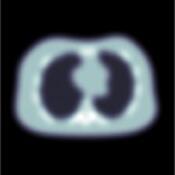By Simon Göppel
Mathematical image processing is a versatile field with a wide range of applications. It finds use in various areas such as medical imaging, digital photography, remote sensing, and video processing. In medical imaging, image processing techniques are used to identify and diagnose diseases, monitor treatment progress and analyse medical images. Remote sensing involves the analysis of satellite images, detection of natural disasters, and monitor- ing changes in land use. In digital photography, image processing helps to improve image quality, remove noise and artefacts, and balance color. Similarly, in video processing, image processing techniques are applied to each frame in order to track objects, stabilize video, and compress video data. Moreover, image processing is also an essential aspect of computer vision, robotics, and machine learning, where it enables object recognition, face detection, and image classification.
In the digital realm, images are represented as a matrix of numbers, where each number corresponds to the intensity value or color of a pixel in the image. A grayscale image is represented by a single matrix, where the value of each pixel represents the intensity of the gray level, i.e.

where I(i, j) represents the image matrix, M and N are the height and width of the image, and Ii,j represent the intensity value of the pixel at position (i, j), respectively. A color image, on the other hand, is represented by three matrices of the form (1), one for each color channel (red, green, and blue). These matrices are stacked on top of each other, to form a matrix of size M N 3, which represents the colored image. These matrices are then manipulated using various mathematical operations such as convolutions, Fourier transforms, and wavelet transforms to perform image processing tasks.
While the above representation is used in computers, images can also be modeled more mathematically as functions, for example as elements in so-called Hilbert spaces. These spaces contain functions that satisfy certain properties. Most comonly, images are assumed to be square integrable, or in more engineering terms: ”images are signals containing a finite amount of energy”. In this case, the Hilbert space is the space of all possible images, and the image is represented as a function f (x, y), where x and y are spatial, continuous coordinates. The image function can be seen as a vector in the Hilbert space, and the inner product between two images can be defined as the integral of the product of their respective functions. This leads to a set of mathematical operations that can be applied to images using tools from functional analysis, such as the Fourier transform, wavelet transform, and convolution.




Functional analysis provides the framework to analyze the properties of images in the Hilbert space and to develop efficient algorithms to manipulate images. For example, the Fourier transform is a powerful tool to decompose an image into its frequency components (Figure (b)), and it can be used to remove noise, perform image compression, and en- hance image features. The wavelet transform is another tool that can be used for image decomposition and feature extraction (Figure (c)), and it has been used in image denoising, compression, and recognition. Convolution is a linear operator that can be used to filter images, and it is widely used in image processing to perform operations such as blurring (Figure (d)), sharpening, and edge detection.
In summary, modeling images as functions in Hilbert spaces allows for the application of mathematical methods from functional analysis to manipulate these images. These meth- ods provide powerful tools for image analysis and processing and have found numerous applications in fields such as computer vision, medical imaging, and remote sensing.